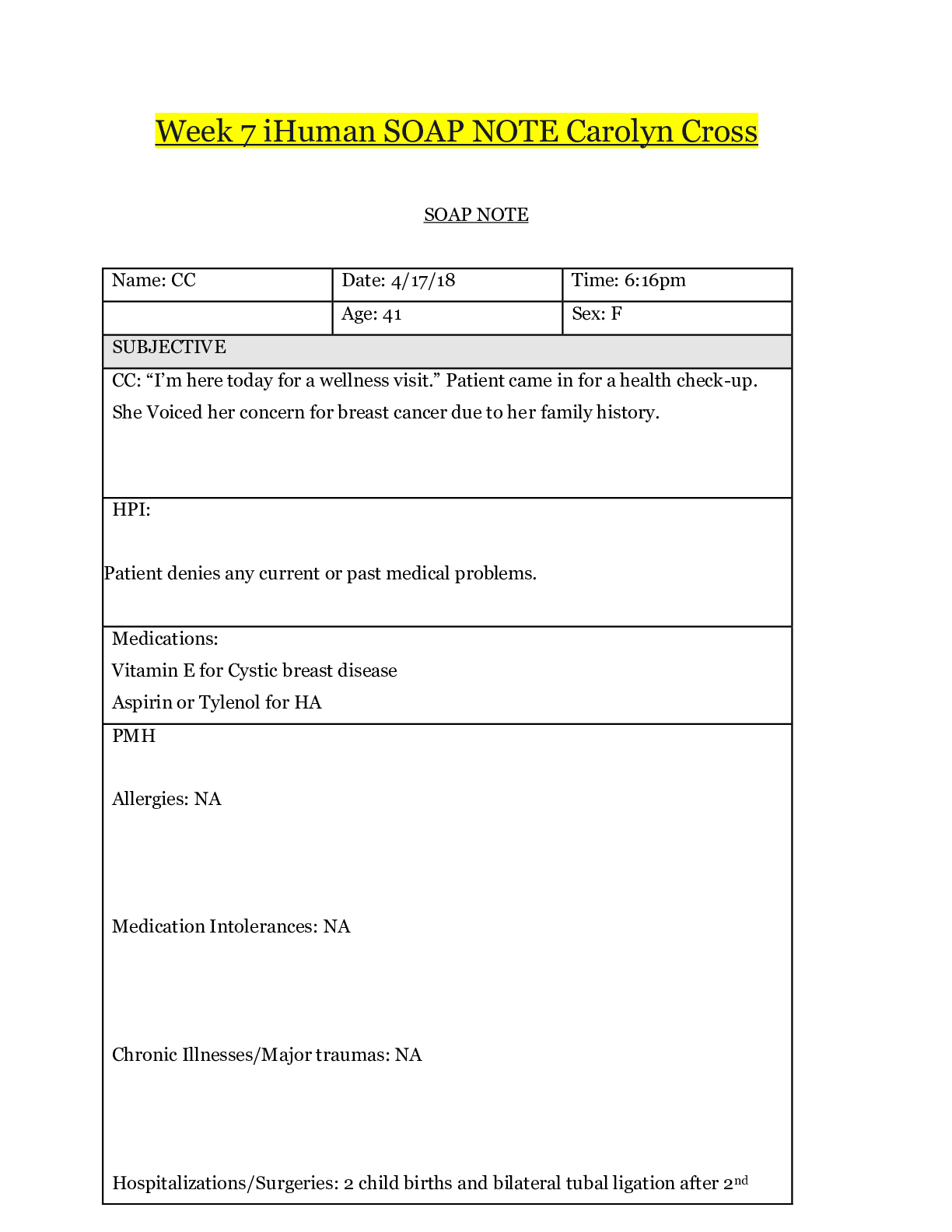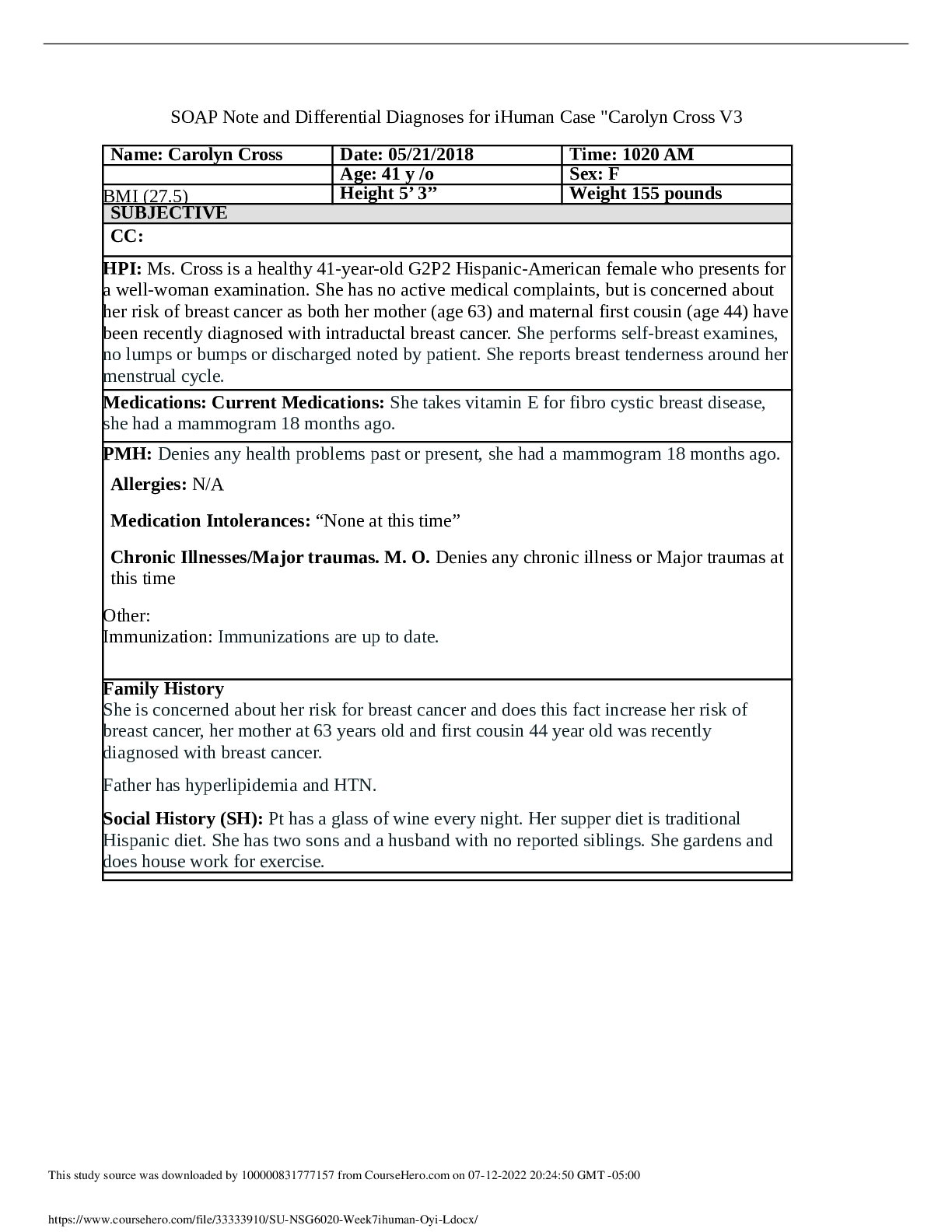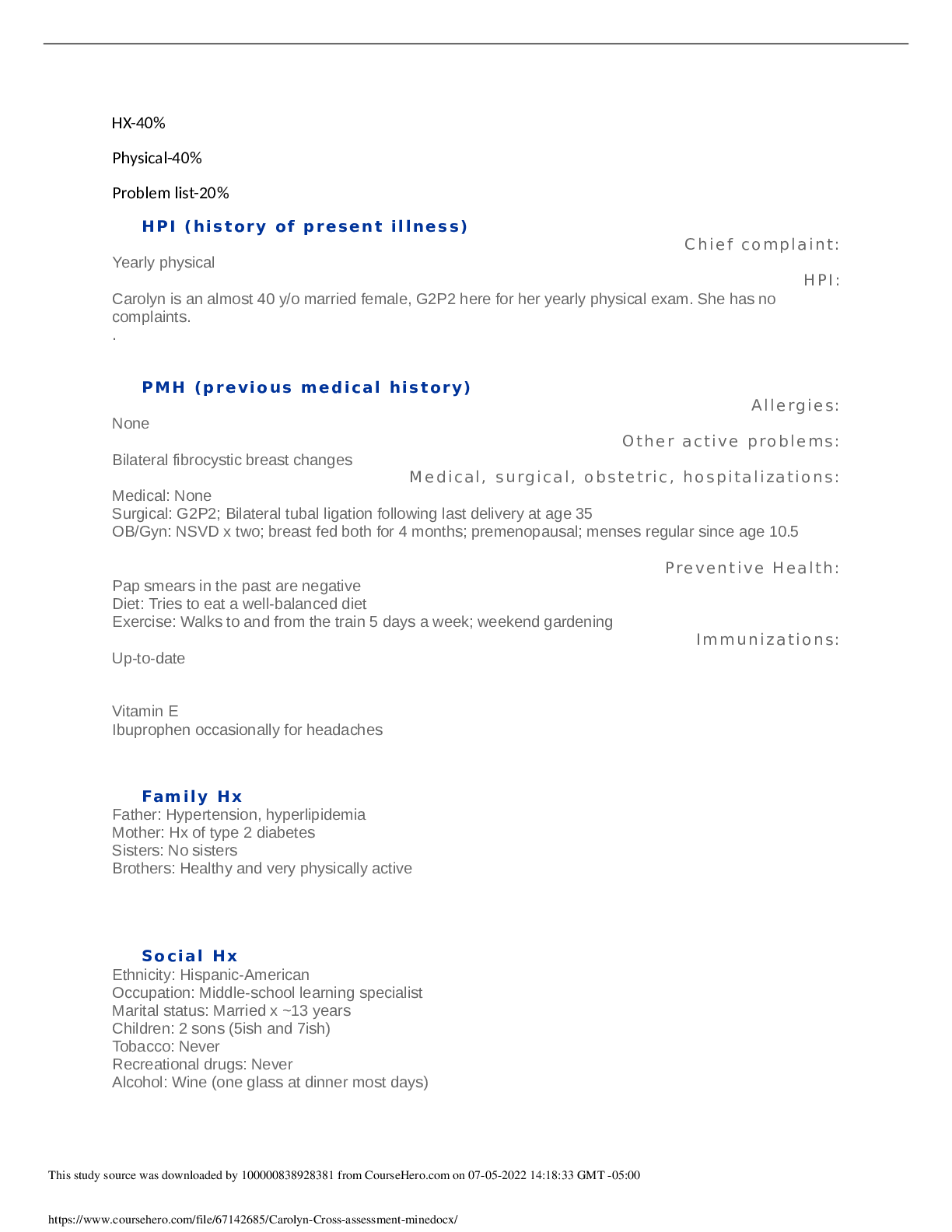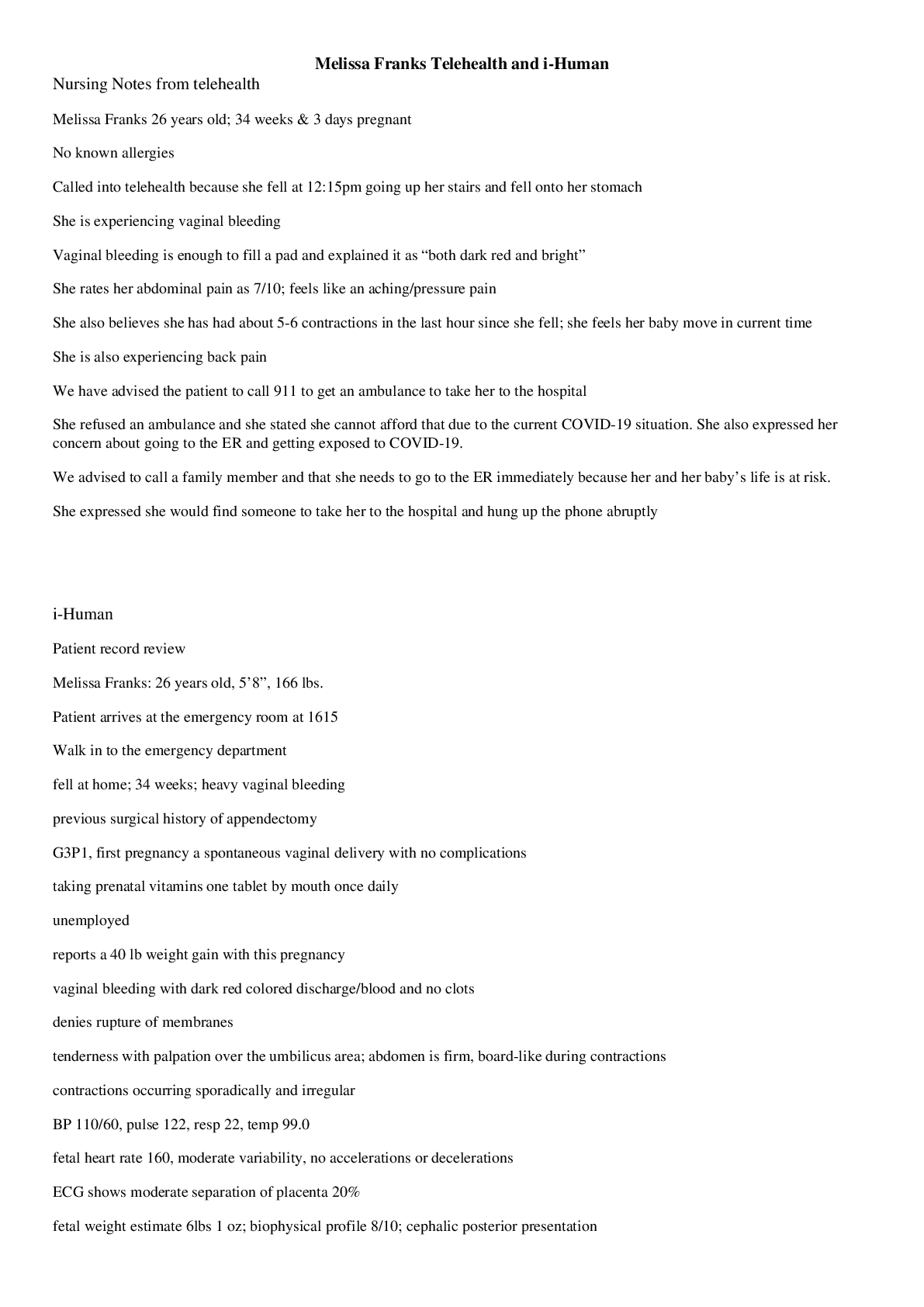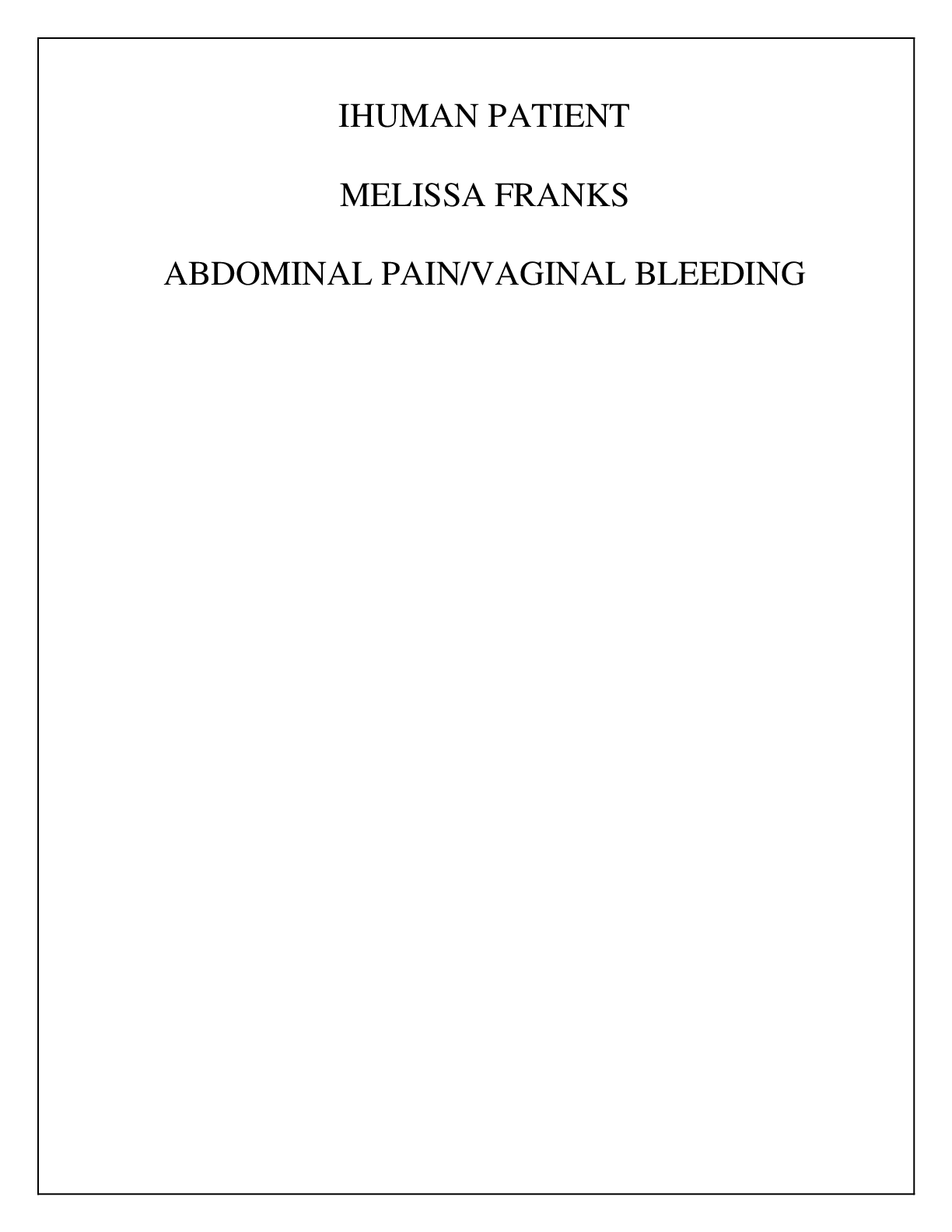Western Governors University_ NRNP 6531Mabel IHuman Template 100% CORRECT
Document Content and Description Below
Western Governors University_ NRNP 6531Mabel IHuman Template Template Below is the template you are to follow when developing your management plan. It is to be completed as a Word document and the... n you can copy and paste it in to iHuman. Also, always be sure to complete the EMR on the case. Use this template with each case. It is not a SOAP format as that is not required. 30 points will be deducted for not utilizing the template. Primary Diagnosis and ICD-10 code: Also include any procedural codes. Osteoarthritis- (M17.0) Osteoarthritis of the knee is a common degenerative bone and joint disease, which is caused by the degradation synthesis coupling of chondrocytes, extracellular matrix, and subchondral bone under the action of mechanical and biological factors (Xin et al., 2021). Out of all of them, the articular cartilage damage is the most important pathological changes noted, which is mainly interceded by inflammatory reactions (Xin et al., 2021). This diagnosis was chosen as the primary diagnosis because of the patient family history of arthritis and the fact that she reports having bilateral knee pain, with morning stiffness, as well as the same type pain in her hands. All of these symptoms are indicative of individuals who have osteoarthritis. She also mentioned that the symptoms seemed to have gotten worse over the last 5 years and osteoarthritis does get progressively worse as time goes on. Differential Diagnoses- Why? What? How? 1. Rheumatoid arthritis- (M06.9) RA is a systemic inflammatory autoimmune disorder that mainly affects the peripheral synovial joints (Taylor, 2020). RA is a disorder that develops gradually and while in the early stages, determining a diagnosis can be very difficult (Taylor, 2020). Most patients will report symptoms of stiffness in one or more joints, often noticing the stiffness in the morning, accompanied by discomfort on movement and joint tenderness (Taylor, 2020). The joints that are mainly affected are the joints in the hands, wrist, and feet (Taylor, 2020). Other large joints that can be affected as well are the joints of the knees, shoulders, elbows, and ankles. This diagnosis was chosen as a differential diagnosis because this patient had several of these symptoms mentioned above. In order to ultimately rule this diagnosis out I would have to wait on the diagnostic test results that was ordered to determine a diagnosis of RA or rule it out. 2. Gout- (M10.9) Gout is an inflammatory arthritis that occurs when there are deposits of monosodium urate crystals in the joints and soft tissues that is caused by elevated levels of uric acid in the blood stream (Mbuyi & Hood, 2020). There are thousands of individuals living with gout in the US, making this disorder the most common inflammatory arthritis nationally (Mbuyi & Hood, 2020). Gout usually affects the first metatarsophalangeal joint in the hands, which can eventually lead to gouty flareups that develops in the ankles, midfoot joints, knees, wrist, and elbows (Mbuyi & Hood, 2020). The pain from a gout flareup can become so severe that the patient often complains of an inability to tolerate even the slightest pressure on the affected joint (Mbuyi & Hood, 2020). During the exam the examiner may notice that the affected joints are warm, erythematous, and extremely tender to touch, and a joint effusion may be present (Mbuyi & Hood, 2020). Once again, this diagnosis was chosen because of the patient reporting that her hands were puffy and swollen, she had positive joint effusions, and she could barely make it through the exam because of the pain during palpation. I personally ordered specific diagnostic test such as a serum uric acid test to determine if this patient really does have gout. 3. Psoriatic arthritis- (L40.52) Psoriatic arthritis is a chronic autoimmune- mediated skin disease usually resulting in life long treatment (Dobson-Belaire, et al., 2018). Individuals with psoriatic arthritis usually present with systemic inflammation, often resulting in joint pain that can become debilitating (Dobson-Belaire et al., 2018). Most people complain of morning stiffness and are typically individuals who have the skin condition psoriasis (Dobson-Belaire et al., 2018). This diagnosis was chosen because of the patient complaint of having morning stiffness, and she reported how she felt as if the pain in her knees were getting worse and she couldn’t perform her normal activities of daily living because of it. Nevertheless, this diagnosis was ruled out because after performing an assessment on the patient she did not have any skin conditions particularly those resulting in psoriasis. Additional laboratory and diagnostic tests: 1. CBC 2. ESR 3. CRP 4. Serum uric acid 5. Bilateral knee x-ray Obtaining a CBC along with joint aspiration are test that can help to differentiate OA from other inflammatory diseases (Maldonado & Zúñiga, 2019). ESR and CPR are inflammatory markers and in individuals with OA the levels are usually normal or slightly elevated (Maldonado & Zúñiga, 2019). Collecting a serum uric acid level will help to determine if the patient indeed has gout (Maldonado & Zúñiga, 2019). In individuals with gout their serum uric level is usually high (Maldonado & Zúñiga, 2019). Performing bilateral x-rays of the knee will indicate how severe the OA is and show structural changes of the bones as the disease progresses (Maldonado & Zúñiga, 2019). Consults: referrals to specialists, therapists (physical, occupational), counselors, or other professionals. If you are sending to hospital, what orders would you write for a direct admit? This patient complains of morning stiffness and difficulty performing activities of daily living. I would refer this patient to physical therapy to help increase the functioning and strength of the joints (Maldonado & Zúñiga, 2019). Engaging in PT 2-3 times a week would help to reduce the pain, swelling and stiffness this patient experiences daily. It would also help her to regain some sort of normalcy back to her life. Therapeutic modalities: pharmacological and nonpharmacological management. With a history of bleeding stomach ulcers, this pain should use Tylenol as a first line of treatment for pain (Maldonado & Zúñiga, 2019). Other medications that are good for individuals with arthritis are Celebrex or Vioxx (Maldonado & Zúñiga, 2019). If the pain becomes more severe and the other medications mentioned above no longer works, an opioid analgesic such as Vicodin would suffice, however, keeping in mind the addictive habit that can form with medications such as this (Maldonado & Zúñiga, 2019). Joint injections with steroids to reduce acute inflammation can be given 3-4 injections per joint per year (Maldonado & Zúñiga, 2019). Other injections that can be beneficial as well are hyaluronic acid into the affected joint (series of 3 injections), Sodium hyaluronate, and Hylan G-F 20 (Maldonado & Zúñiga, 2019). If all of these interventions fail and the patient is still complaining of unbearable pain, a referral to an Orthopedic surgeon need to take place and they can discuss other surgical alternatives such as arthroscopic lavage and extraction of loose bodies, debridement, osteotomy, or total knee replacement (Maldonado & Zúñiga, 2019). Nonpharmacological management would consist of managing the patient’s weight if obese, a reduction in overuse of the joints, heat and ice therapy, and applying Capsaicin cream to the affected joints (Maldonado & Zúñiga, 2019). The treatment goal for this patient is to reduce pain, improve or maintain function, and prevent or slow progression of the disease (Maldonado & Zúñiga, 2019). Health Promotion: 1. Weight loss 2. Bone density test annually 3. Heat and Ice therapy 30 minutes each several times daily 4. Physical therapy 2-3 times weekly (Water Aerobics) 5. Connecting with a support group that can help the patient adjust to living with OA Patient education: Patient education is critical to an individual with OA. They should be educated on the importance of consuming a healthy diet so that they can avoid putting extra stress on the joints by being overweight or obese. Using an assistive device such as a cane or walker to help support them while ambulating and performing other actives of daily living. Staying active is another way to help improve the functioning of the joint but being careful not to over use those joints. Going to get weekly massages if they can afford it is another way to help relive stiffness in the joints as well as pain. Most importantly connecting the patient up with a good support group can help the patient cope with the diagnosis of OA. Disposition/follow-up instructions: Instructions would be given for the patient to take all medications as prescribed and report any complications or side effects and to call back to the office in a week for her lab results. However, if her symptoms were to get worse or new side effects were to develop then return to her nearest emergency department or Urgent care facility for immediate treatment. References Dobson-Belaire, W., Goodfield, J., Borrelli, R., Liu, F., & Khan, Z. (2018). Identifying Psoriasis and Psoriatic Arthritis Patients in Retrospective Databases When Diagnosis Codes Are Not Available: A Validation Study Comparing Medication/Prescriber Visit-Based Algorithms with Diagnosis Codes. Value In Health, 21(1), 110-116. doi: 10.1016/j.jval.2017.06.012 Maldonado, D., & Zúñiga, C. (2019). SOAP for family medicine (2nd ed.). Philadelphia: Wolters Kluwer. Mbuyi, N., & Hood, C. (2020). An update on gout diagnosis and management for the primary care provider. Nurse Practitioner, 45(10), 16-26. doi: 10.1097/01.NPR.0000696896.83494.fe Taylor, P. (2020). Update on the diagnosis and management of early rheumatoid arthritis. Clinical Medicine, 20(6), 561-564. doi: 10.7861/clinmed.2020-0727 Xin, F., Wang, H., Yuan, F., Ding, Y., & Pabelick, C. (2020). Platelet-Rich Plasma Combined with Alendronate Reduces Pain and Inflammation in Induced Osteoarthritis in Rats by Inhibiting the Nuclear Factor-Kappa B Signaling Pathway. Biomed Research International, 2020, 1-10. doi: 10.1155/2020/8070295 [Show More]
Last updated: 1 year ago
Preview 1 out of 7 pages

Reviews( 0 )
Document information
Connected school, study & course
About the document
Uploaded On
Jul 20, 2022
Number of pages
7
Written in
Additional information
This document has been written for:
Uploaded
Jul 20, 2022
Downloads
0
Views
61







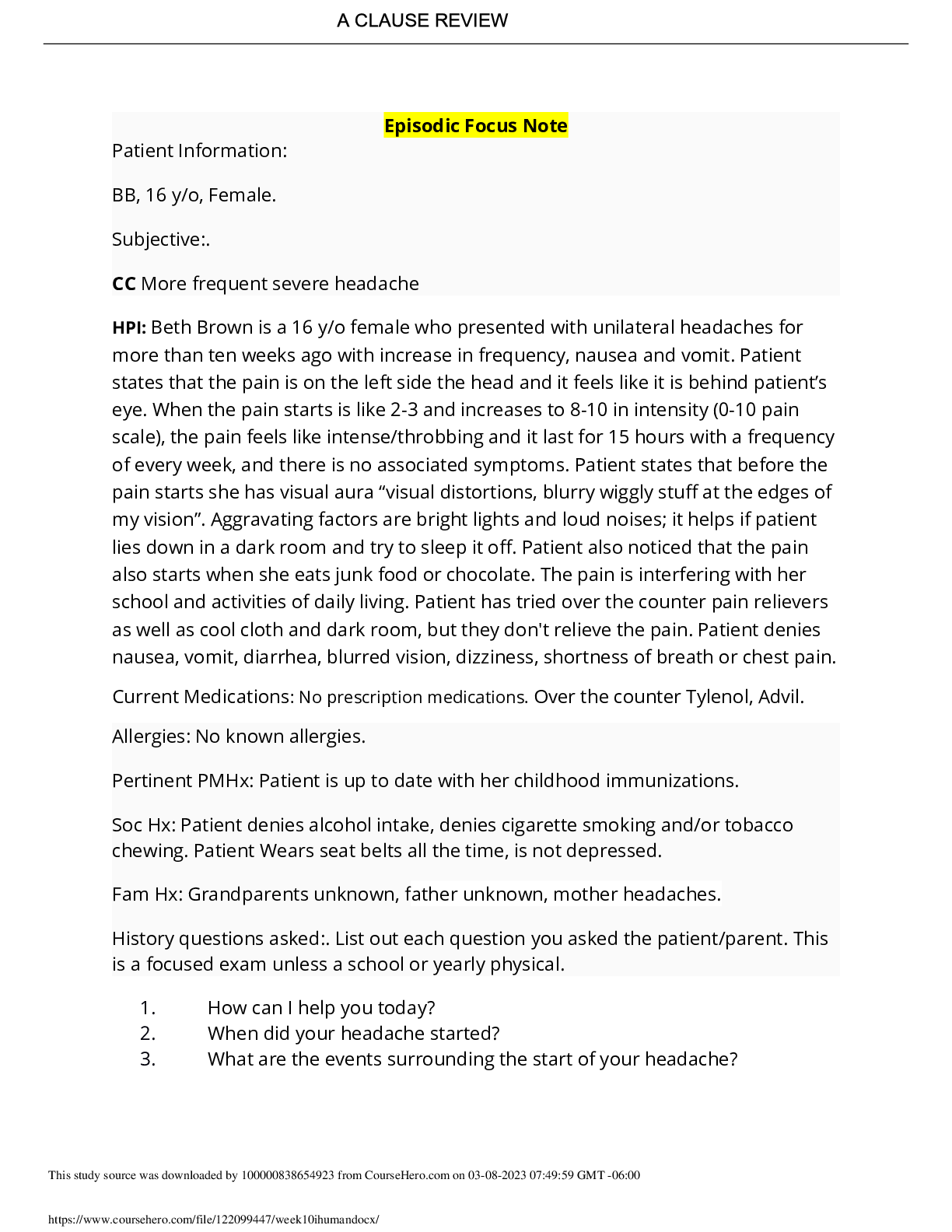
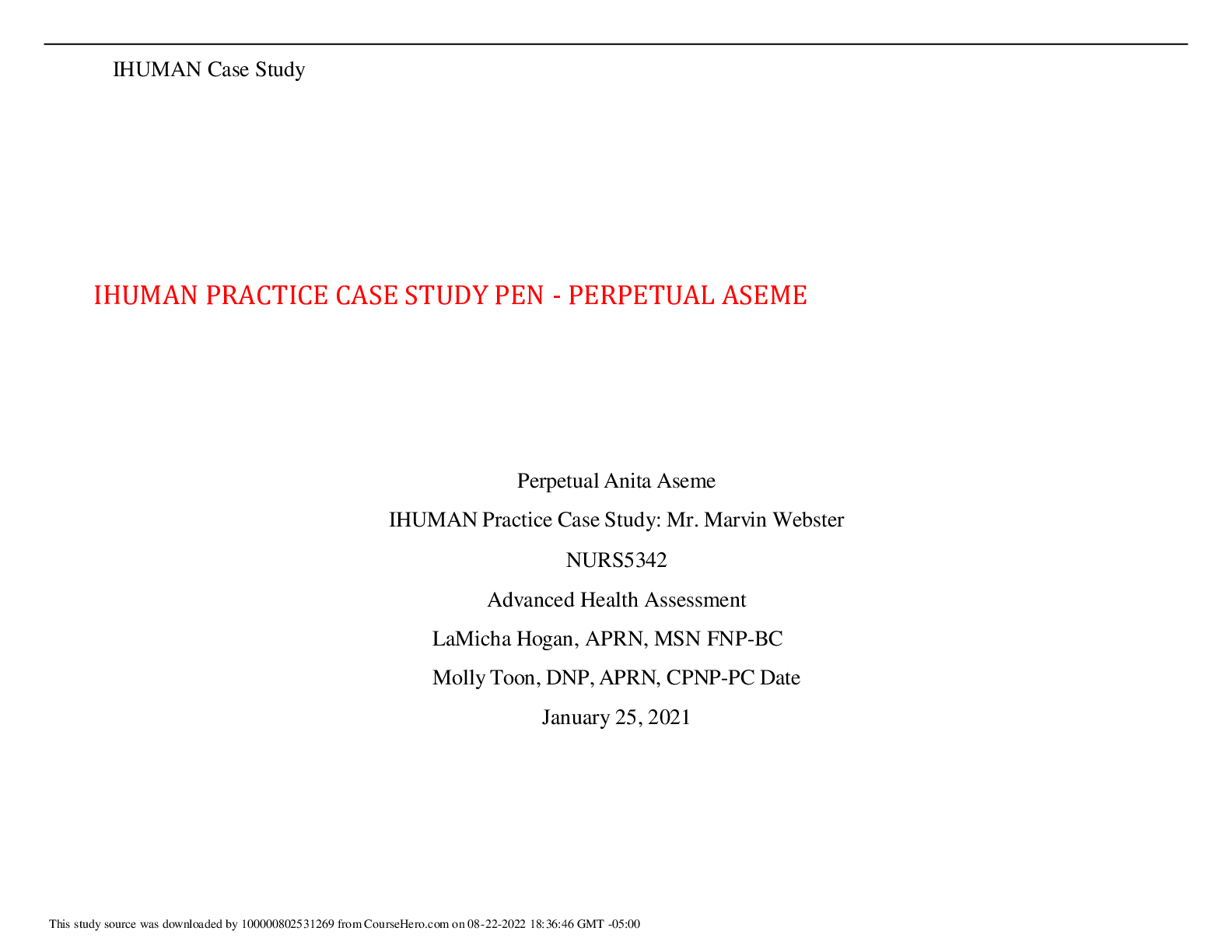
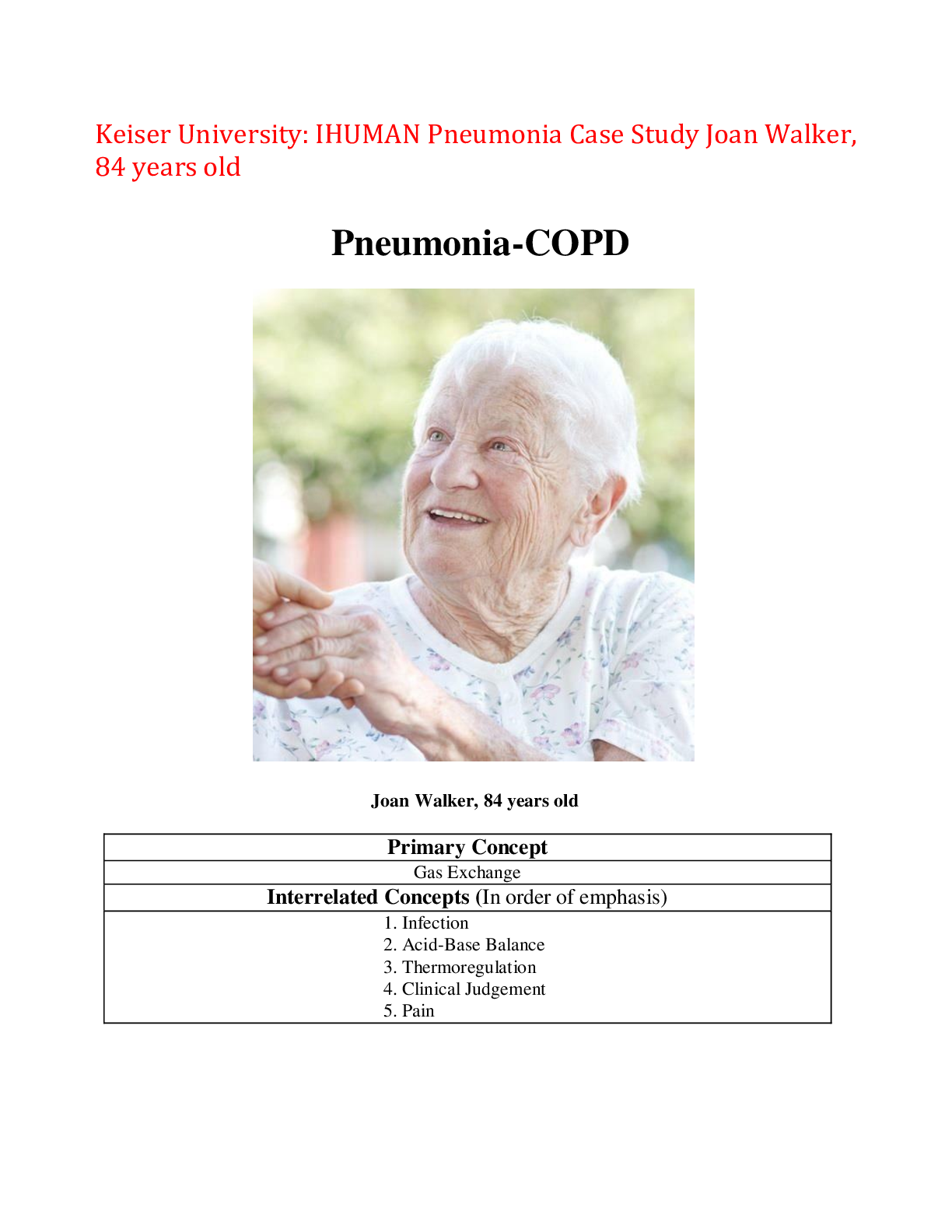
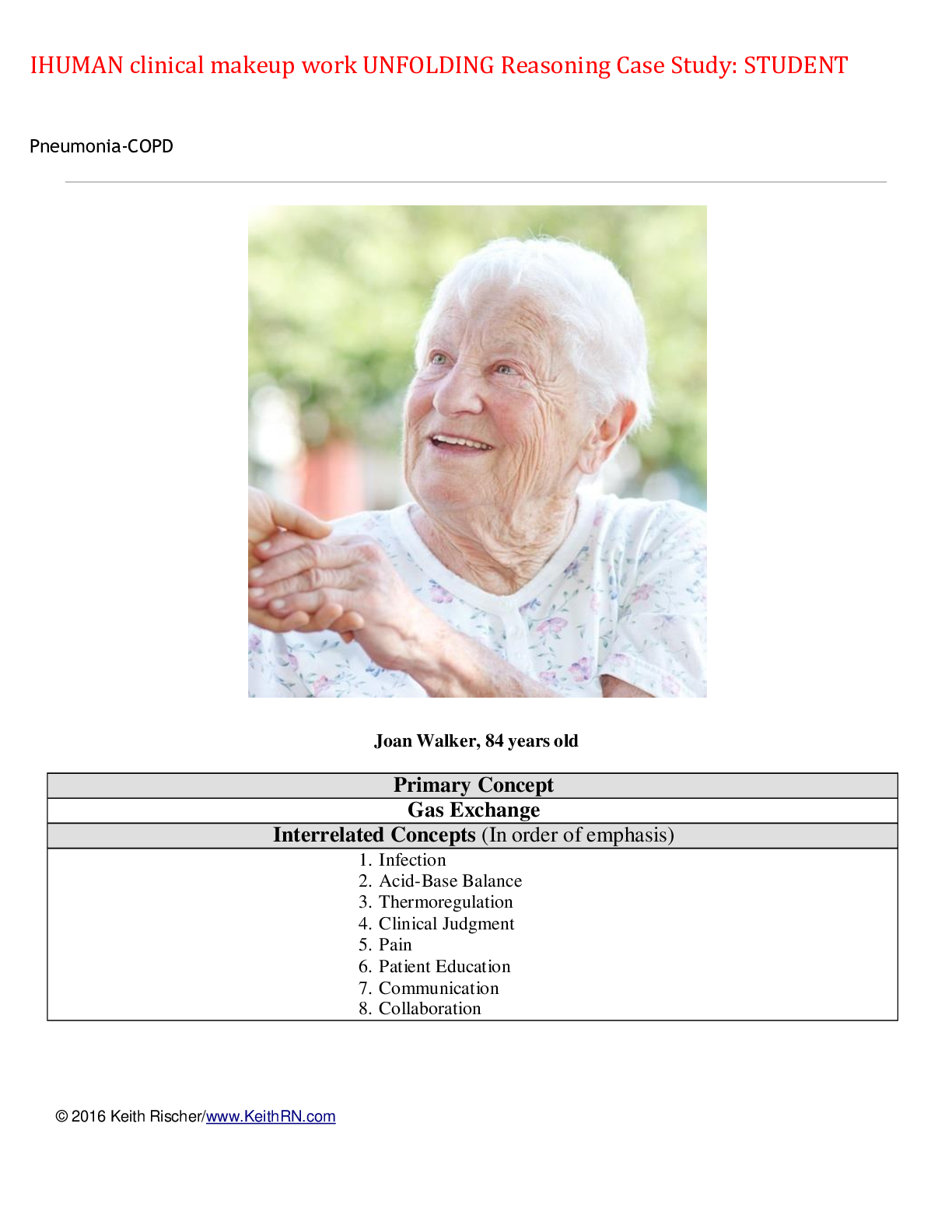

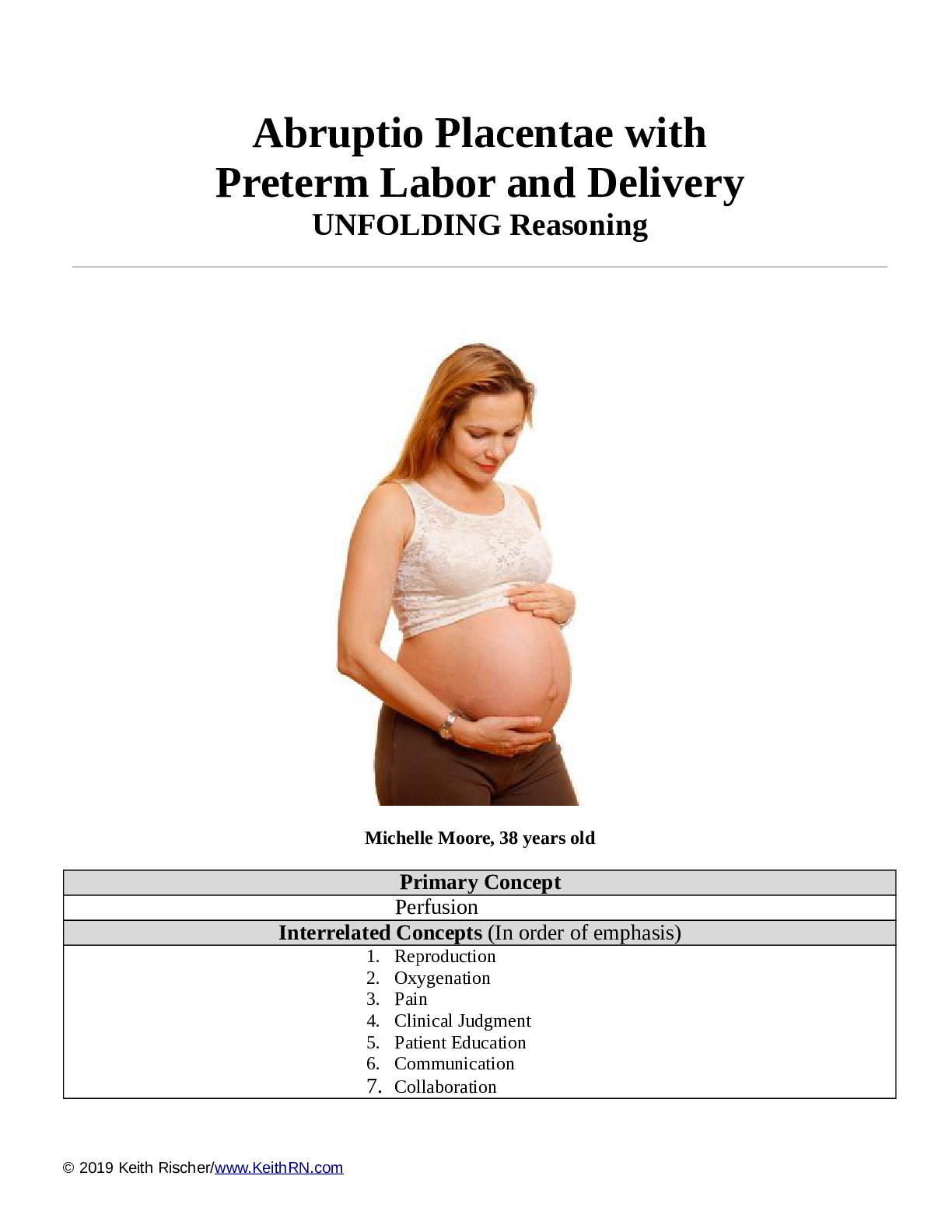




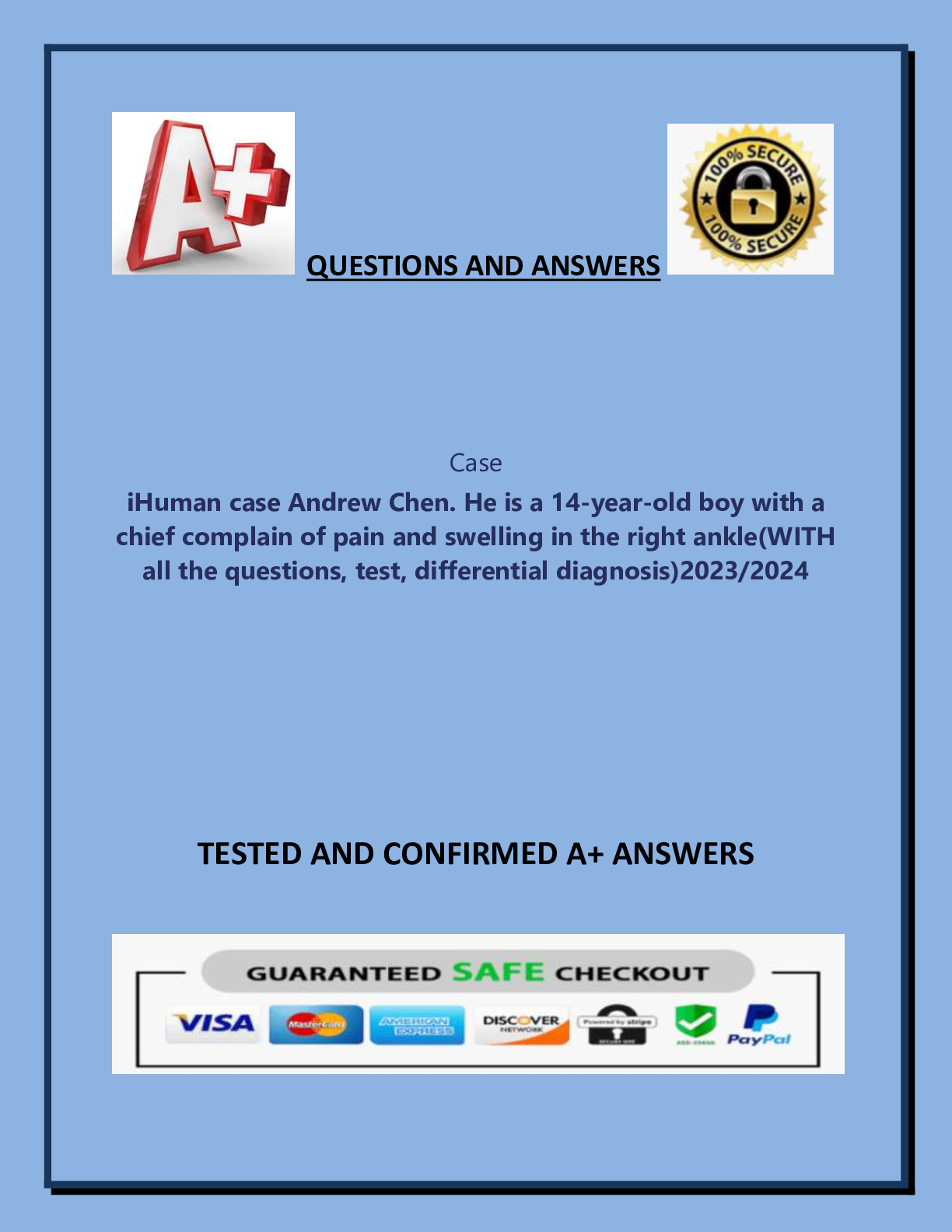
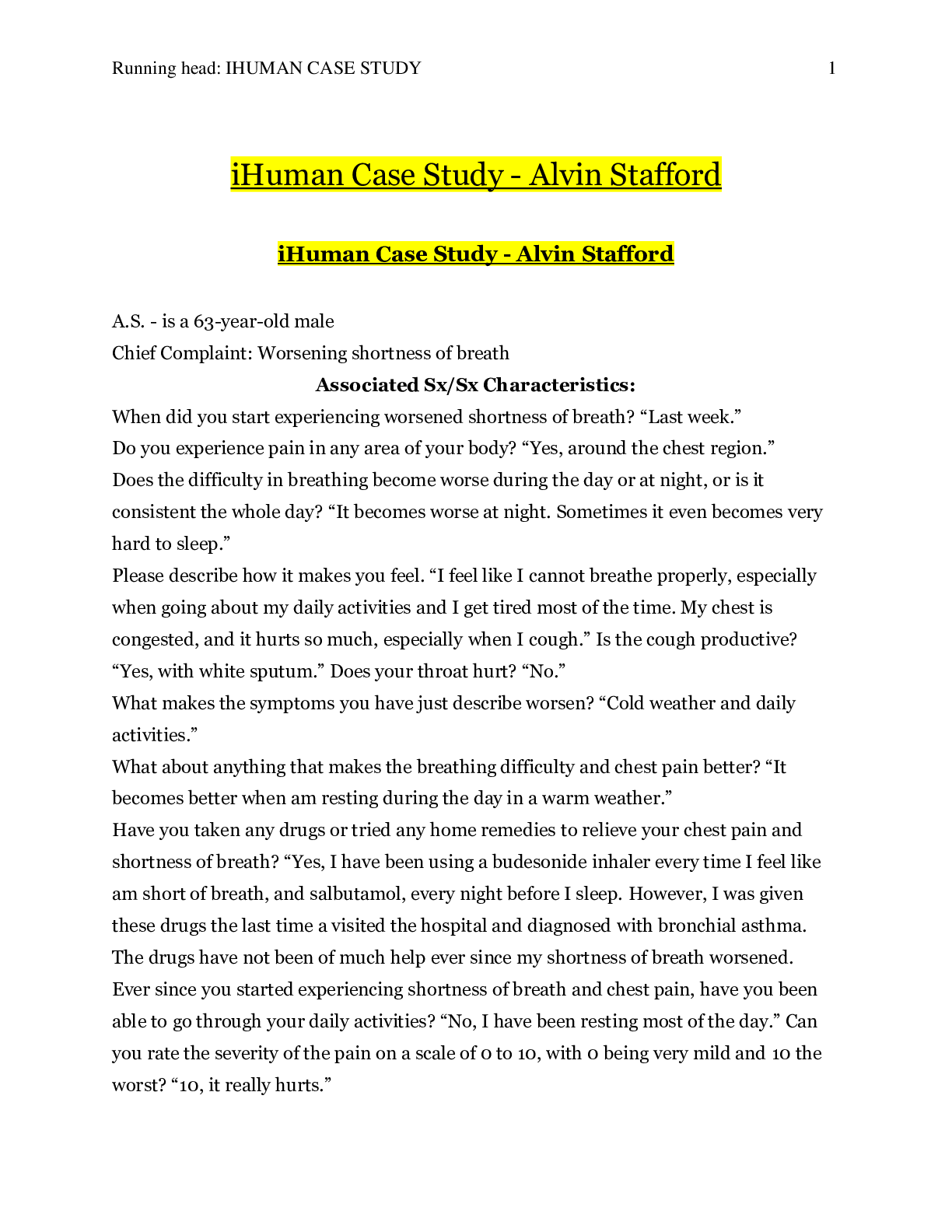


 2021.png)

